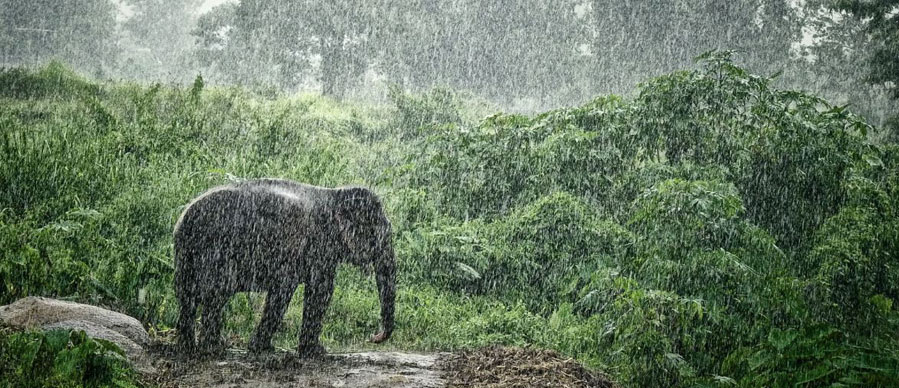Plan a Monsoon Wildlife Getaway to Mudumalai National Park

Hidden among the green folds of the Nilgiri Hills in Tamil Nadu, this protected forest of Mudumalai National Park is one of India’s most diverse wildlife habitats. Located at the junction of three states - Tamil Nadu, Kerala, and Karnataka, it’s known for its dense forests, rolling grasslands, and rich animal life. The region is part of the famous Nilgiri Biosphere Reserve and plays an important role in conserving South India’s natural heritage. What makes the monsoon season truly special here is how the forest transforms with the rains. From dry, dusty trails to lush green canopies and flowing streams, everything gets a fresh new look. For nature lovers, it’s an ideal time to enjoy a quiet, green escape far from the hustle of city life.
Once the rains begin, the dry forest floor turns into a carpet of green. Trees grow fresh leaves, wildflowers bloom along the trails, and seasonal streams and ponds begin to fill up. The entire landscape looks clean, vibrant, and alive. One of the most charming aspects of visiting during this time is the mist that floats through the forest paths, especially in the early mornings and evenings. With fewer tourists around, the forest is quieter, and you can truly soak in the sounds of chirping birds and rustling leaves. The peace and calmness that the monsoon brings makes this season feel more personal and refreshing.
Wildlife Sightings during the Monsoon Season
The forest is home to tigers, leopards, elephants, deer, Indian gaurs, and several other species. However, the thick greenery and abundant water sources during monsoon mean that animals don’t have to travel far in search of food or water. As a result, spotting big animals can become less frequent. While the chances of seeing tigers and leopards are lower during this time, it’s not impossible. If you’re patient and lucky, you may still catch a glimpse of a leopard crossing a trail or elephants moving in herds along the road. The frequent rain showers also make it a good time to observe frogs, insects, and reptiles that thrive in wet conditions.
Birdwatching in Mudumalai National Park is another highlight of visiting during the rainy season. The wet weather brings out the bright colours of these birds, making it a fantastic time for photography. The green background, water droplets on leaves, and diffused lighting from cloudy skies all come together to create perfect shots for your camera.
Safari Experience in Mudumalai National Park
To explore this wild paradise, safaris are conducted by the forest department. Two types of safaris are commonly available - Jeep Safaris and Camper Van Safaris. Jeep safaris offer a closer and more flexible experience, while camper vans are larger and ideal for groups or families. The safaris usually run in the early morning and again in the late afternoon, although heavy rain may sometimes affect their timings.
Even during monsoon, safaris continue on most days, giving visitors a chance to experience the raw beauty of the forest in the rain. To ensure your seat, it's a good idea to use the Mudumalai online booking facility. This not only saves time but also helps manage crowd flow and park regulations more efficiently. Booking online allows you to choose preferred time slots and safari types, and it often provides updates about weather conditions or zone availability. During weekends and holidays, slots fill up quickly - even in the rainy season - so early reservations are a smart choice.
Flora in Full Bloom
Monsoon is the time when the forest shows off its rich plant life. The forest plays a vital role in maintaining the local ecosystem. It helps recharge groundwater, prevents soil erosion, and supports wildlife by providing food and shelter. Walking or driving through the green trails after a rain shower is an experience full of natural beauty and serenity. Even the air smells different, earthy and fresh, often described as ‘petrichor,’ which adds to the calming effect of the surroundings.